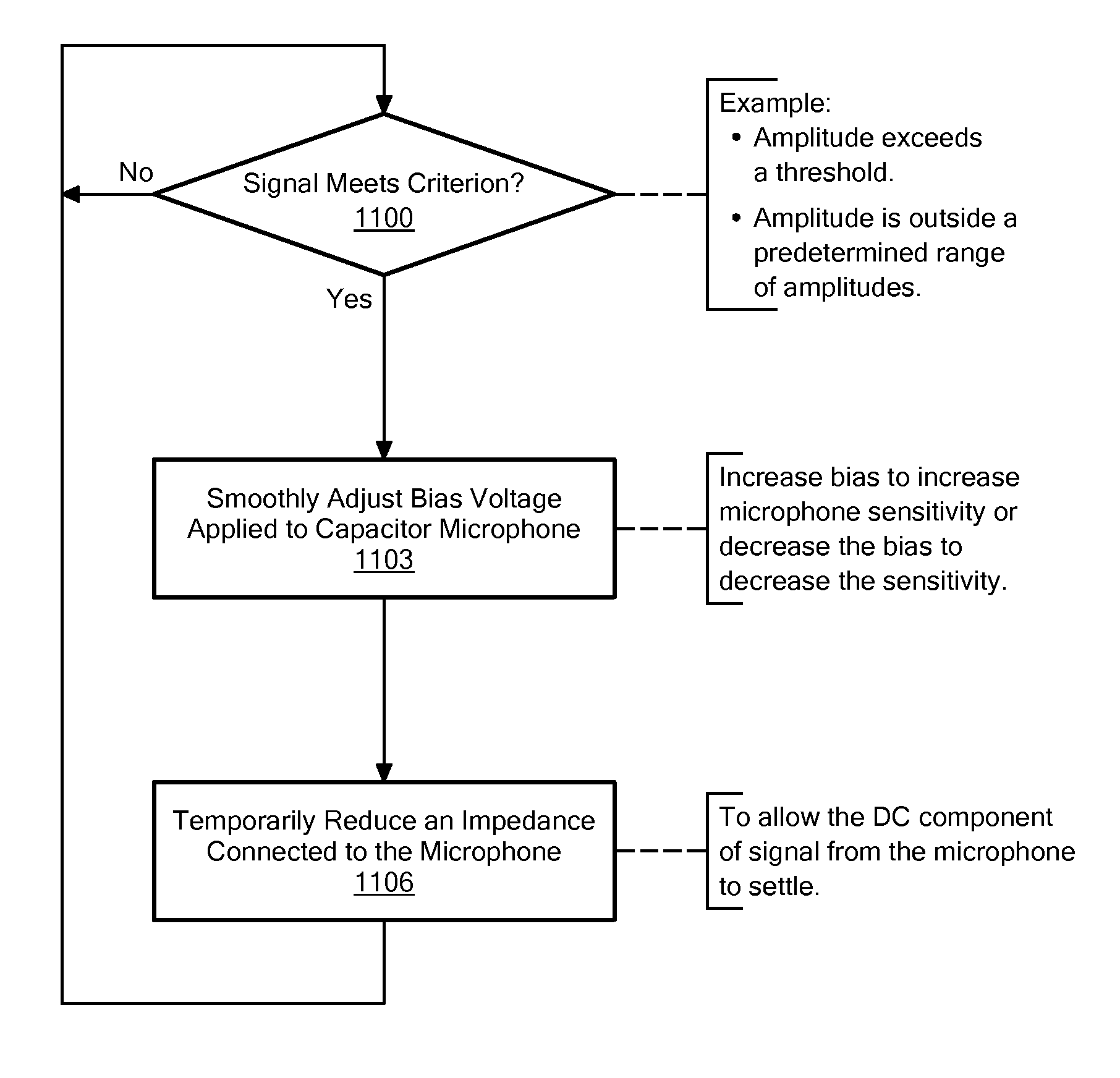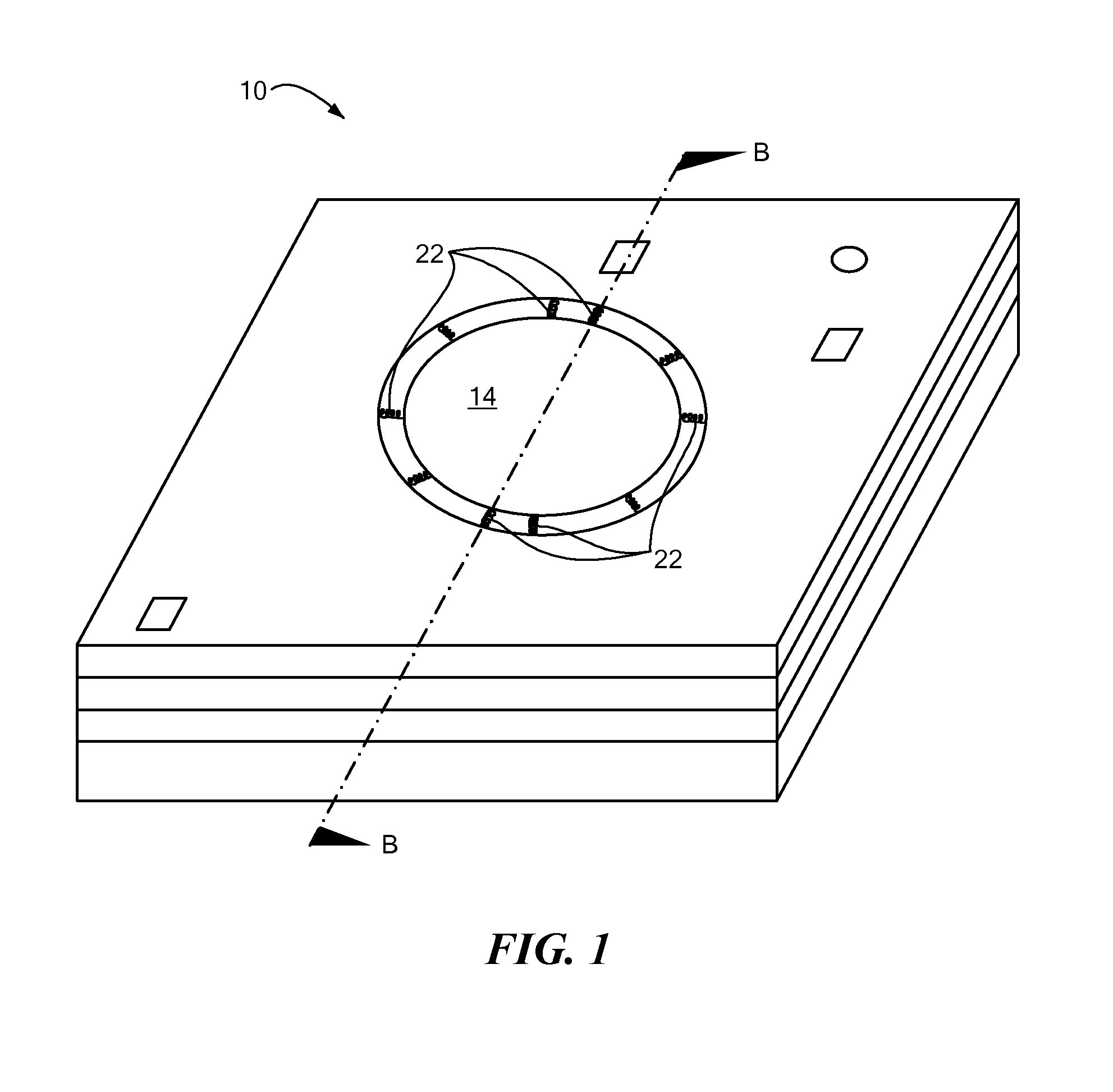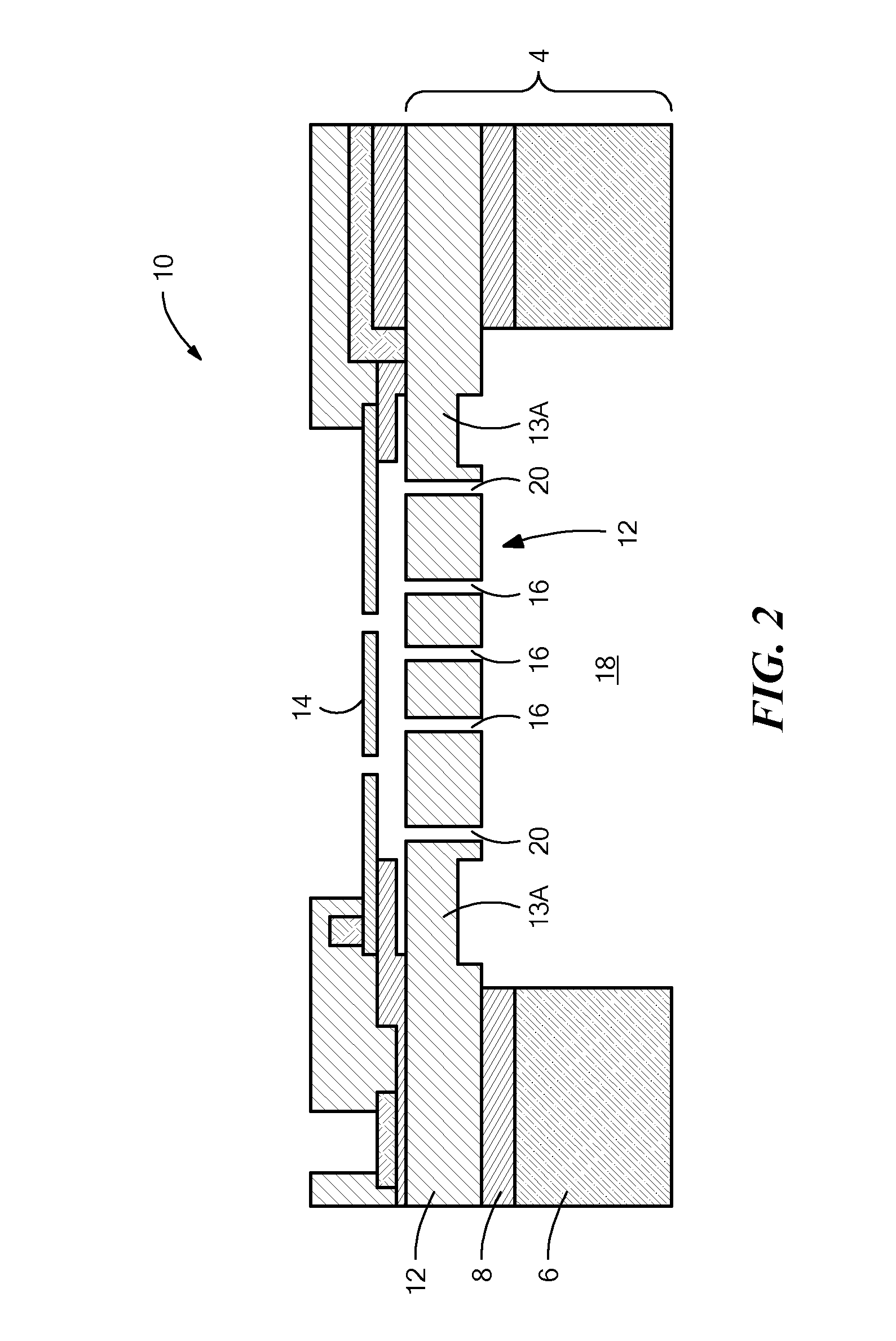MEMS Microphone with Programmable Sensitivity
a microphone and sensitivity technology, applied in the field of mems microphones with programmable sensitivity, can solve the problems of undesirable distortion, asic or other processing circuitry may not be able to handle the peaks of electrical signals, and the system may be subjected to acoustic signals of widely varying amplitudes, so as to increase the sensitivity of the mems microphone and reduce the clipping of the signal derived
- Summary
- Abstract
- Description
- Claims
- Application Information
AI Technical Summary
Benefits of technology
Problems solved by technology
Method used
Image
Examples
Embodiment Construction
[0046]In accordance with embodiments of the present invention, methods and apparatus are disclosed for automatically adjusting sensitivity of a MEMS or other capacitor microphone by automatically dynamically adjusting a bias voltage applied to the capacitor microphone. “Dynamically” here means varying over time, not merely set or fixed, such as when a circuit is fabricated or put into service. Dynamic adjustments respond to, or at least partially compensate for, changes in circumstances, such as unpredictable changes in ambient noise. The sensitivity of the capacitor microphone may be automatically dynamically increased or decreased as need, such as in response to variations in the amplitude of a signal derived from the capacitor microphone. Thus, for example, under high ambient noise conditions, the sensitivity may be reduced to avoid clipping or distortion. On the other hand, the sensitivity may be automatically increased, such as when the microphone receives a low magnitude acous...
PUM
 Login to View More
Login to View More Abstract
Description
Claims
Application Information
 Login to View More
Login to View More - R&D
- Intellectual Property
- Life Sciences
- Materials
- Tech Scout
- Unparalleled Data Quality
- Higher Quality Content
- 60% Fewer Hallucinations
Browse by: Latest US Patents, China's latest patents, Technical Efficacy Thesaurus, Application Domain, Technology Topic, Popular Technical Reports.
© 2025 PatSnap. All rights reserved.Legal|Privacy policy|Modern Slavery Act Transparency Statement|Sitemap|About US| Contact US: help@patsnap.com



